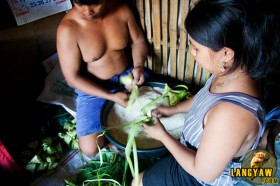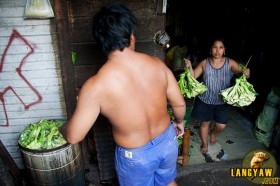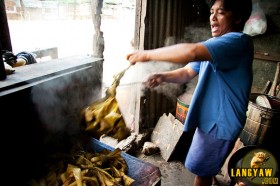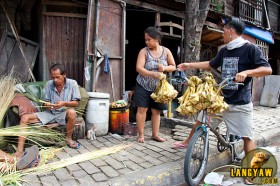Puso: Cebu’s heart of rice - LANGYAW
- ️@langyawtravel
- ️Mon Mar 12 2012


 Speak of Cebu and images of the Sto. Niño , the province’s patron, come to mind. And so does the valiant Lapu-Lapu, sweet mangoes, the famous lechon, guitars and beaches. But it is more than that. Cebu is a special and beautiful place. It is also my home.
Speak of Cebu and images of the Sto. Niño , the province’s patron, come to mind. And so does the valiant Lapu-Lapu, sweet mangoes, the famous lechon, guitars and beaches. But it is more than that. Cebu is a special and beautiful place. It is also my home.
Unless you’re unfortunately bound by the four corners of your hotel room or the idea of a Cebu vacation is limited to resorts, casinos and bars without, for a moment, meeting the man in the street, then I guess, you miss a big part of your touristy junket in this beautiful island province.
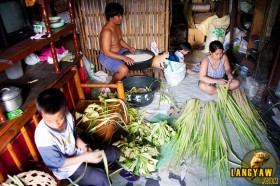
Puso, is quite obiquitous and, like the Sto. Nino, lechon and dried mangoes, it is one of Cebu’s iconic images. Nevermind if its also found in some parts of the country, Indonesia and Malaysia in various names, forms and filling.
In the past, this biodegradable, handy and traditional food pouch was said to be exlusively for the deity’s pleasure as it formed part of ritual offerings is now everyday street food paired with barbecued pork, chicken, seafood and entrails in various streetside foodstalls. It’s de rigeur at Larsians near the Fuente Osmena. At an outing at the beach or even at house parties, its still a popular, no fuss choice paired with lechon, dugo-dugo (blood stew), and other Cebuano dishes. For kinamot (eating with the hands sans spoon and fork) dining, I prefer to have puso anytime, anywhere.
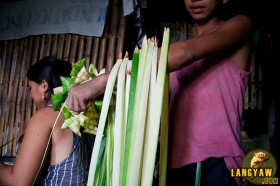
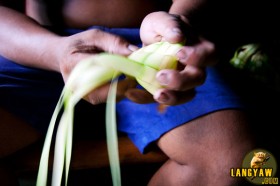
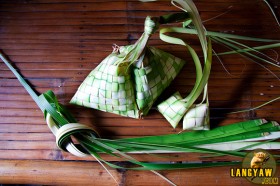

Some call it hanging rice although that term is so simplistic considering the intricacy of the weave and the pride that Cebuanos have for this popular fare. Simply, puso is rice cooked inside a woven pouch made from young coconut leaves. The Cebu version is typically called the kinasing owing to its heart shaped form (in the Cebuano language, heart is kasing-kasing). There is also the binaki or froglike form. These comes in various sizes and can cost from P2 for a mouthful (in Larsian but can be cheaper when ordered directly from the puso maker) to as much as P5 for larger ones.
Like what they usually say, you’re trip to Cebu is never complete if you’ve never eaten puso.

